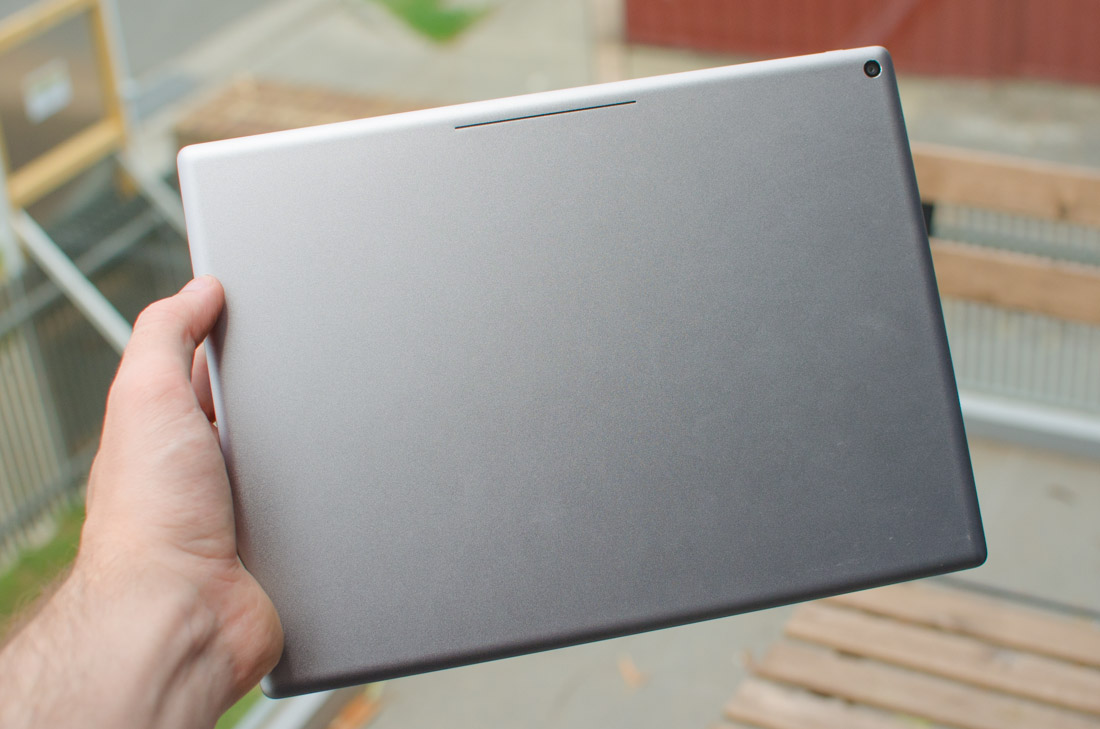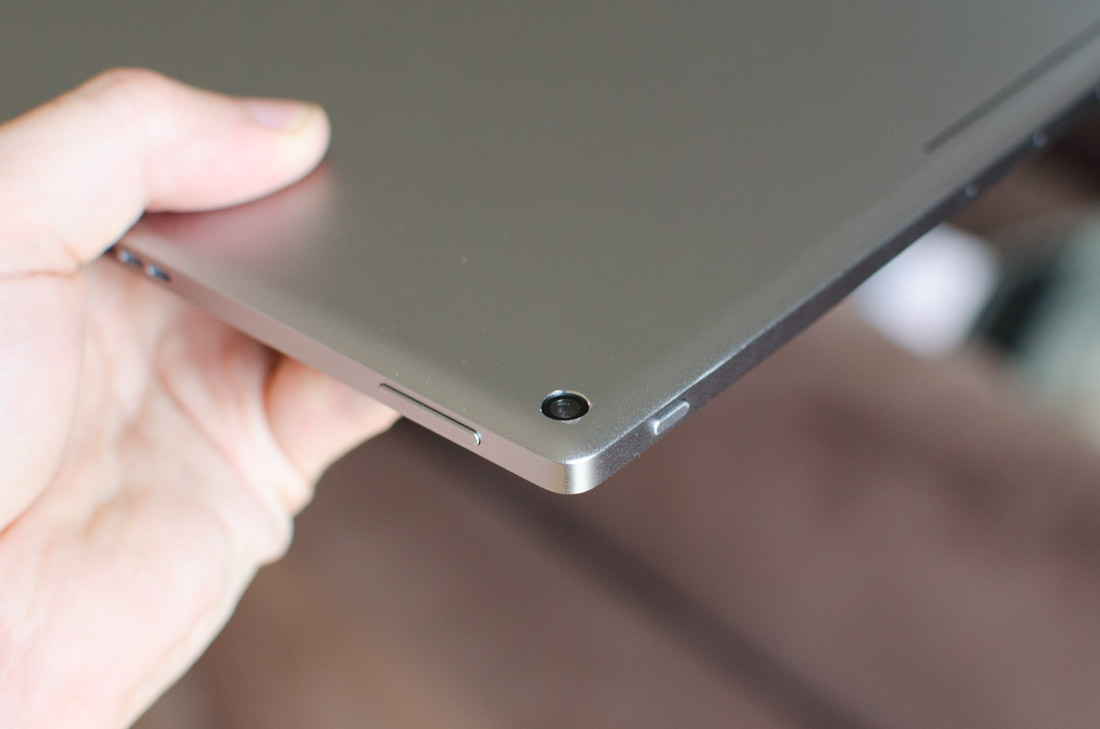The Pixel C isn't the first tablet that's been branded and sold by Google. Before the company has offered a collection of Nexus tablets, including the popular Nexus 7 and powerful Nexus 9, however this is the first one to be fully developed in-house. Not unlike the Chromebook Pixel laptop that runs Chrome OS, with the Pixel line Google means to show off what's possible to build using their software platforms even if it's inpractical for most to buy.
The Pixel C packs a 10.2-inch high-res display alongside powerful internals and an interesting magnetic keyboard accessory. Running Android 6.0 Marshmallow, the device is positioned as Google's flagship tablet and with a price of $499 for the 32 GB model, there's no mistaking the Pixel C for a high-end device.
That price is just for the tablet, too: if you want the keyboard accessory, be prepared to fork out an extra $149; and if you want 64 GB of storage, that's an extra $100. The pricing structure is similar to other tablet-plus-keyboard products like the iPad Pro and Microsoft Surface Pro, although the Pixel C is a more affordable offering overall.
So what does $499 of flagship Android tablet get you? To start with, the Pixel C is clad in a metal shell that wraps around all four sides of the device. Unlike many metal-bodied tablets, there is no gap in the design or any plastic inserts for wireless radio performance. Google has engineered this tablet in such a way that disrupting the beautiful back panel was unnecessary, leaving one of the nicest metal shells I've seen.
The metal body looks and feels great, with a distinct premium feel that few other devices, like the iPad and perhaps the Surface line, manage to achieve. There's no flex and the glass front panel with ideally-sized bezels complements the metal unibody from a visual and usability perspective.
While the Pixel C's metal body is visually appealing, it's a bit heavier than other similarly sized tablets. Compared to the Samsung Galaxy Tab S2 9.7, the Pixel C is 128 grams heavier: a difference that is noticeable in the hand. Where the Galaxy Tab S2 is comfortable to use in one hand for extended periods, I suffered from some light arm fatigue when using the Pixel C as an e-reader.
The edges of the Pixel C include standard features and ports. When holding the tablet in landscape mode, the small power button is on the top edge's left side, where it's somewhat difficult to hit on a consistent basis. The volume rocker is at the top of the left edge, while at the bottom is a USB Type-C port. On the top of the right edge is a 3.5mm audio jack.
The Google Pixel C features dual side-firing speakers, which I only occasionally muffled during two-handed landscape usage. With the speakers oriented in this way, it's clear that Google expects you to primarily use the tablet in landscape mode and with the keyboard dock. This is in contrast to the Galaxy Tab S2 and iPad Air 2, which are both portrait-first tablets. The speakers are of decent quality, but like most small drivers, they're not anything special.
Along the top edge of the Pixel C are four small holes for microphones, presumably for some sort of voice recognition array. Curiously, the Pixel C doesn't have always-on voice functionality that would make great use of these. Rumor is, the Pixel C was supposed to be Google's first Chrome OS tablet but with the hardware ready on hand for a while and the software not there yet, it was decided to ship with Android M instead.
On the back of the Pixel C is a four-segment light strip, which serves two purposes. In general usage, the strip illuminates with the four Google colors, which acts as branding on the tablet as there's no other Google, Android, or Pixel logo to be seen. If the tablet is not in use, double tapping on the light bar will show you how much battery is left by illuminating however many bars are appropriate. This is a surprisingly handy feature, but I would have liked to see the light bar used for more cool functions.
There are two cameras on the Pixel C: a front-facing 2-megapixel unit, and a rear 8-megapixel camera. As expected for a tablet, neither is excellent, but the front camera is capable of 1080p capture for the odd Hangouts video call.
The Google Pixel C has a very nice display, coming in at 10.2-inches in size with a resolution of 2560 x 1800 and a pixel density of 308 ppi. The display is amazingly crisp and clear for reading text and viewing images, with great brightness (I record around 480 nits at maximum) and solid viewing angles. It's an IPS LCD, so it doesn't have as deep blacks as OLED, but contrast is very good (over 1:4000 at max brightness).
Color accuracy is good without being great. The LCD is calibrated to have accurate white balance and color temperature, but it's slightly oversaturated and general accuracy falls behind a well-calibrated sRGB display. It's not as terrible as a Samsung AMOLED, but you wouldn't want to do any serious color-accurate work on this display.






